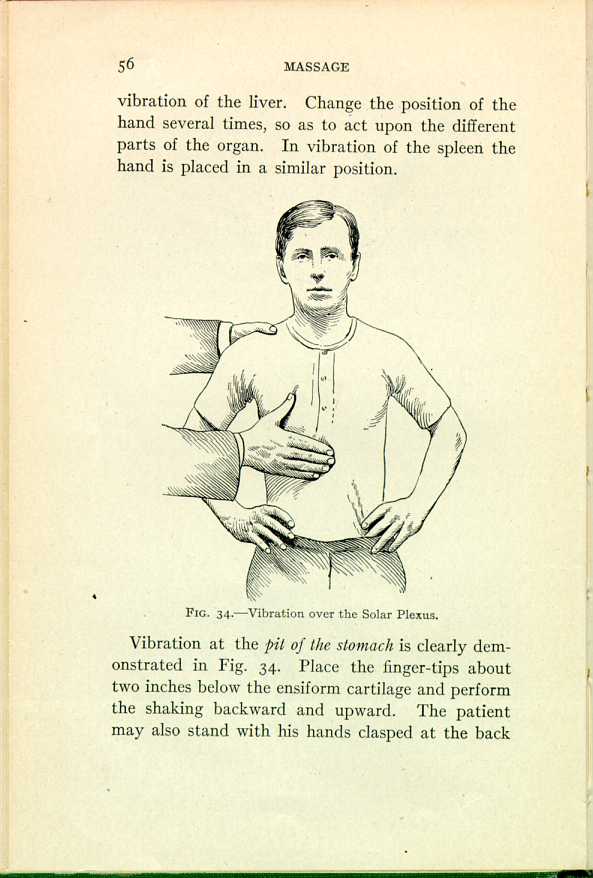| Massage and the Original Swedish Movements | ||
PRESSING AND SHAKING (VIBRATIONS)
Closely connected with the massage proper are the oscillatory movements,—which we call vibrations,—used principally upon the extremities and over some of the internal organs.
We have two principal forms of vibrations—viz., digital, with one or more fingers; palmar, with the palm of the hand. In digital vibration the operator uses his fingers in vertical motion over a nerve or separate organ, no flexion or extension of the hand being allowed, as too heavy pressure will then be made. "The straining of the muscles in the operator's arm ought to be so slight as to be scarcely perceptible to any one who has his hand over them.''
In Fig. 32 we have represented a digital vibration of the forearm. Vibration of the whole arm is given in the following manner: The operator grasps the hand and shoulder, keeping the arm in an extended position, and shakes as quickly as possible. The movement may also be performed by two operators.
In vibration of the leg the operator grasps the foot with one hand and the thigh, as high as possible, with the other, he raises the limb up and shakes it quickly.
In Fig. 33 we have demonstrated the palmer
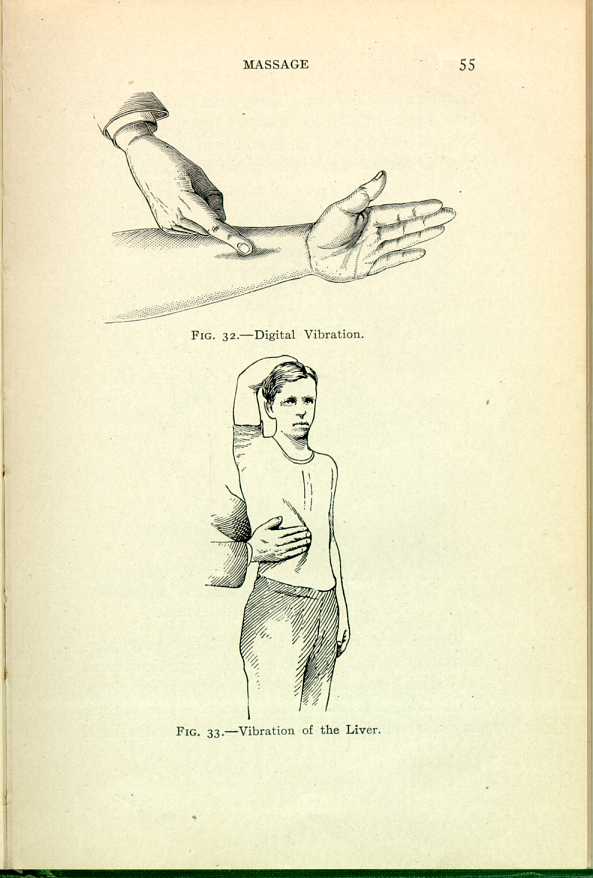
FIG. 32.—Digital Vibration.
[Description: Drawing of a finger pressing on a wrist. ]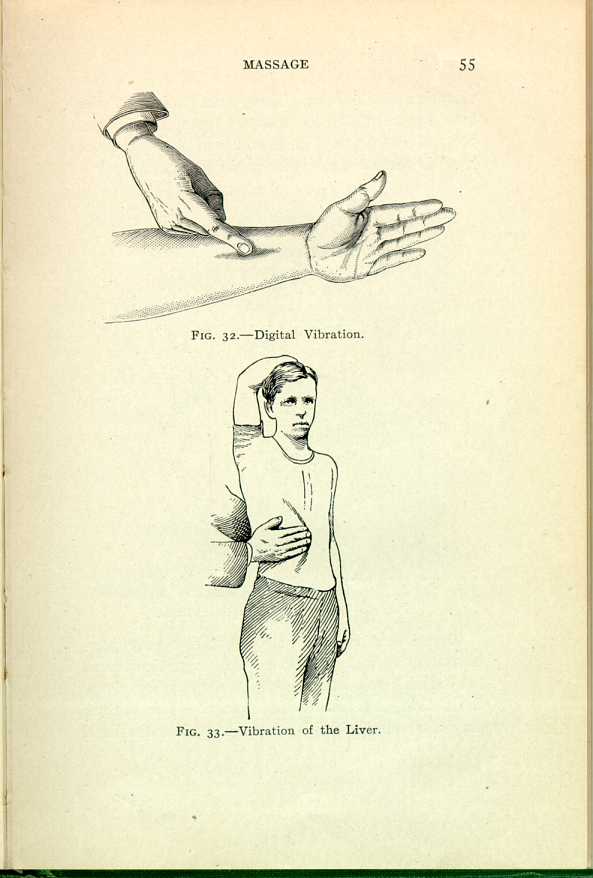
FIG. 33.—Vibration of the Liver.
[Description: Drawing of an operator's hands pressing against a patient's stomach and back. ]Vibration at the pit of the stomach is clearly demonstrated in Fig. 34. Place the finger-tips about two inches below the ensiform cartilage and perform the shaking backward and upward. The patient may also stand with his hands clasped at the back
Pressing and shaking of the bladder. The patient is lying flat on
his back with knees drawn up so as to
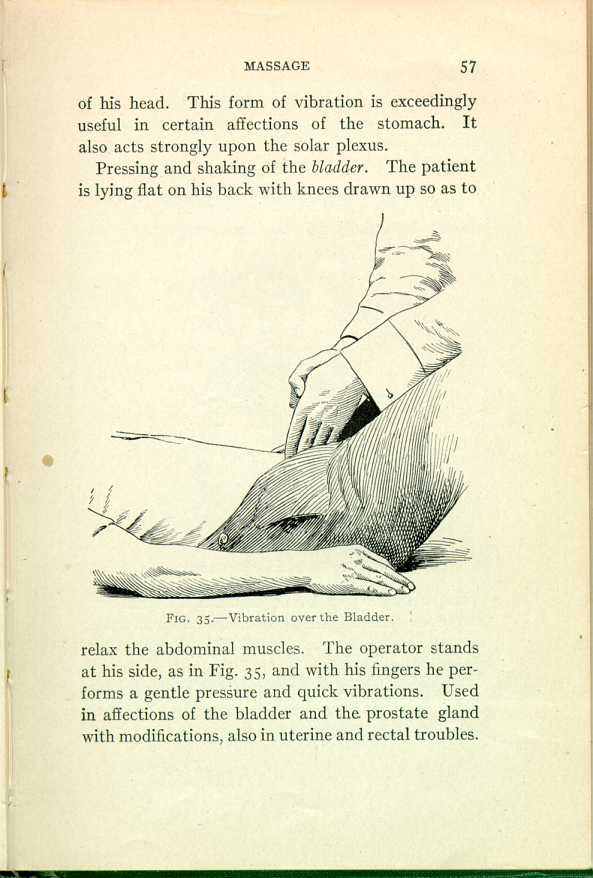
FIG. 35.—Vibration over the Bladder.
[Description:
Drawing of an operator's hands pressing against a reclining man's abdominal
region.
]
Vibration of the larynx is shown in Fig. 36. The thumb is placed on one side of the thyroid cartilage and the fingers on the other. It should be performed gently at first until the patient becomes used to it.
In Fig. 37 we show the vibration of the eyes. The patient is
sitting with the back supported. The
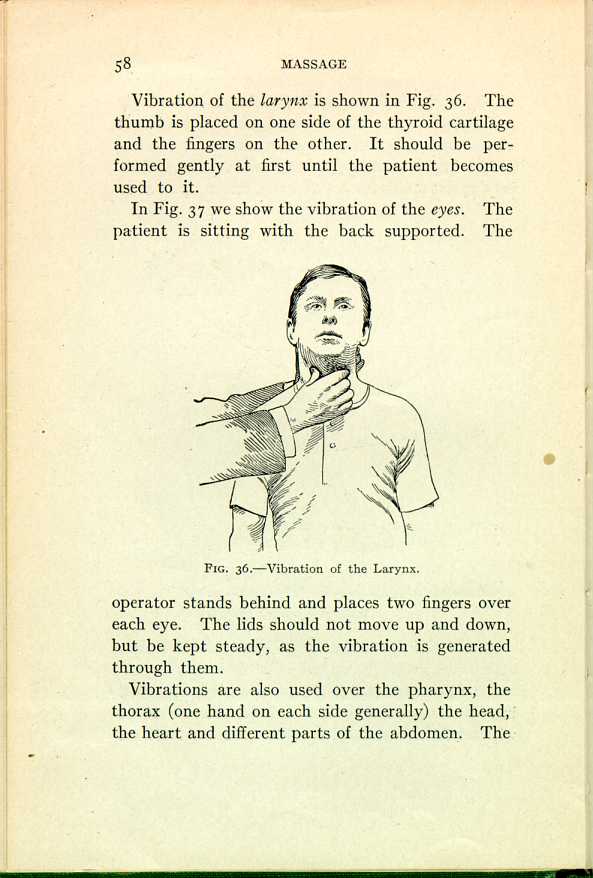
FIG. 36.—Vibration of the Larynx.
[Description:
Drawing of an operator's hand pressing against a man's throat while the
other hand presses against the back of the neck.
]
Vibrations are also used over the pharynx, the thorax (one hand on each side generally) the head, the heart and different parts of the abdomen. The
Pressing and shaking have a stimulating and strengthening effect upon
the nerves; they also act
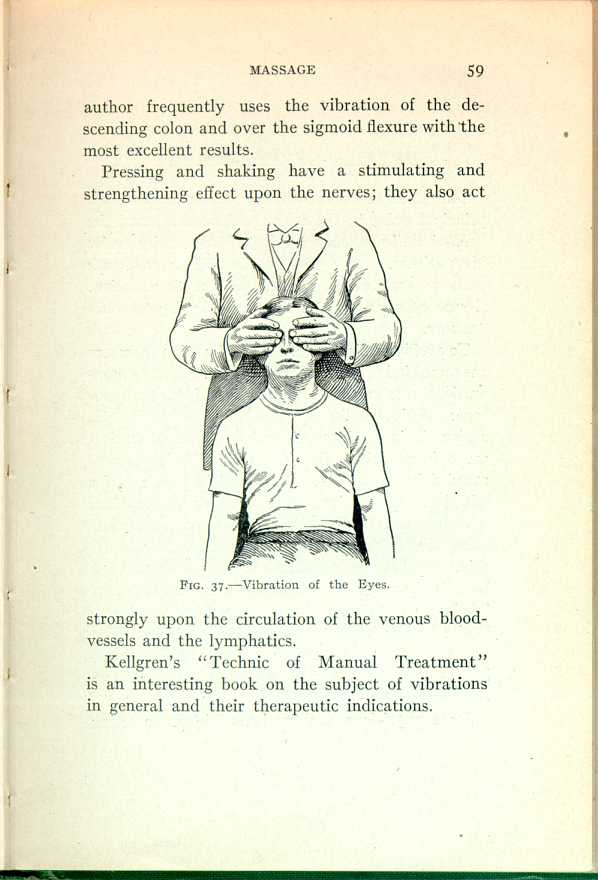
FIG. 37.—Vibration of the Eyes.
[Description:
Drawing of an operator standing behind a seated patient with his hands held
over the patient's eyes.
]
Kellgren's "Technic of Manual Treatment'' is an interesting book on the subject of vibrations in general and their therapeutic indications.
| Massage and the Original Swedish Movements | ||
